#empress maria leopoldina
Photo

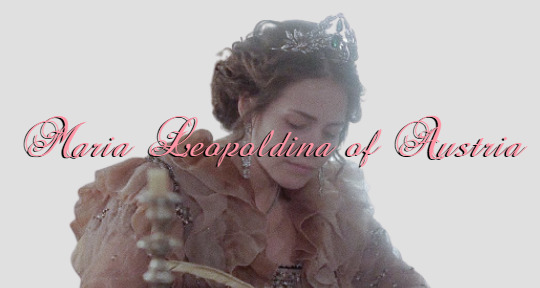


♕ AUGUST 13, 1822 — Maria Leopoldina of Austria is appointed as Acting Princess Regent of the Kingdom of Brazil
In August 1822, the then Prince Regent of Brazil Dom Pedro went on a political tour to the Province of São Paulo to secure the province's loyalty. On August 13, Dom Pedro appointed his wife, the Princess Maria Leopoldina of Austria, as Acting Princess Regent of the Kingdom of Brazil and head of the Council of State in his absence, giving her authority to take the necessary political decisions. On September 2, 1822 a new decree from Portugal arrived in Rio de Janeiro. The letter overturned the Brazilian government and demanded the immediate return of Pedro to Portugal. Maria Leopoldina immediately met the minister José Bonifácio de Andrada e Silva and summons the Council of State. She signs on the same day the Decree of Independence, declaring Brazil separate from Portugal. Leopoldina send her husband the news, along with a letter urging him to proclaim the independence of Brazil. On September 7, 1822 at the shore of the Ipiranga River in São Paulo the letter reached Dom Pedro and he declared the independence of Brazil from the former United Kingdom of Portugal, Brazil and the Algarves. The Prince and Princess then became Emperor Dom Pedro I of Brazil and Empress Consort Maria Leopoldina of Austria. As Acting Princess Regent Leopoldina was the first woman to govern an independent Brazil, the first empress consort of the country, the first empress of the Americas and the first woman to govern an independent American country.
Letícia Colin as Princess Maria Leopoldina of Austria, the Empress Consort of Brazil, Queen Consort of Portugal and Archduchess of Austria in “Novo Mundo” (2017).
#novo mundo#perioddramaedit#historyedit#weloveperioddrama#historicwomendaily#perioddramasource#onlyperioddramas#braziliansource#periodedits#period drama#women in history#brazilian history#history#maria leopoldina#maria leopoldina of austria#empress maria leopoldina#novomundoedit#mine#mine: edit#mine: novo mundo#mine: maria leopoldina#mine: novela#mine: brazilian tv#mine: brasil#novelaedit#novela#brazilian novela#brazilian tv#brazilian stuff#novela brasileira
49 notes
·
View notes
Text
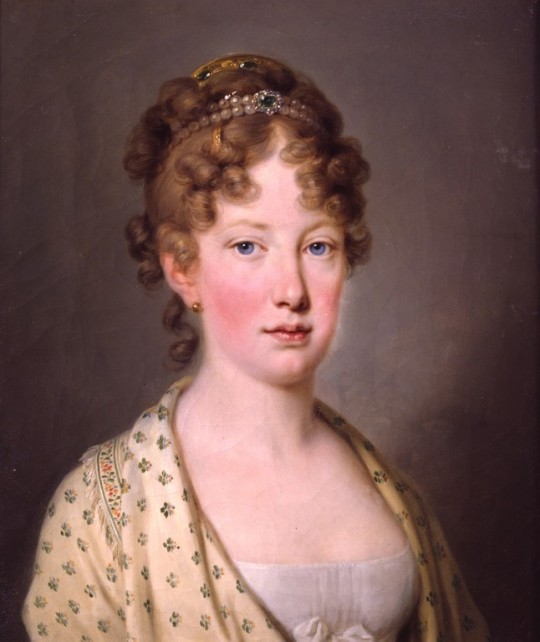
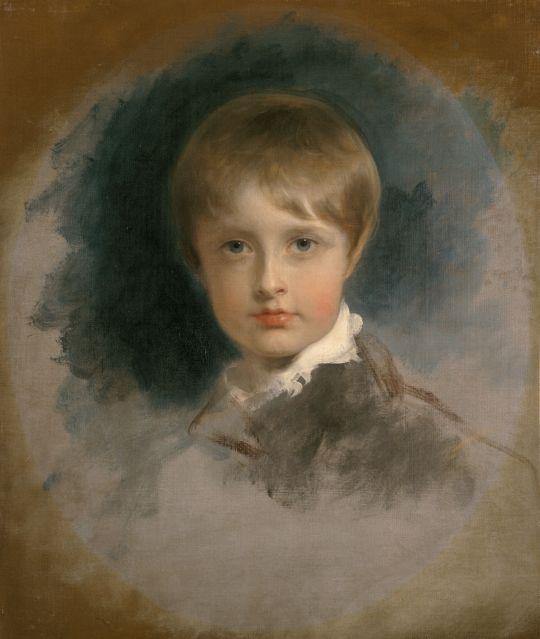
Marie Louise’s sister Leopoldine kept her fully supplied with news of her nephew, whom she described as “life incarnate.” The little Prince [Napoleon II] seems to have been very fond of the future Empress of Brazil. She found this “very flattering” and could have “played with him for hours on end.” “Yesterday I had a delightful experience,” she wrote on July 31, “for he called me and I had to go and join him in the garden, where he told me a story of which I did not understand a word, as he had a big croissant in his mouth”.
(...) The delightful and little-known Leopoldine, the future Empress of Brazil, had also promised her sister to watch over “Franz,” whom she considered “too sweet for words,” and to protect him “against the spiteful remarks which are already being made about him.” Certain members of the Court chose in fact to regard him simply as “the Ogre’s son.” “I am always afraid,” wrote Marie Louise, “that people will forget that it is not his fault that he has such a father. . . .” “I am entirely of your opinion,” replied Leopoldine, “and it makes me choke with anger to hear certain self-important people being as spiteful as they can about him to dear Papa [Emperor Franz I]. Neipperg will be able to give you the details, because I have discussed the subject at length with him; as for myself, one of these days I shall certainly place the child officially under my protection.” She was especially critical of the methods employed by Dietrichstein [Napoleon II's tutor], whom she called “the abominable Count Moritz.” She would have liked to see much more of her “adorable” nephew— “Papa’s darling and mine too”— but unfortunately “there are people who will not always allow it, and whose eyes I should like to scratch out.” When the boy, for some reason or other, was prevented from going to play in his little garden, Rainer [Archduke of Austria], faithful to his promise, intervened; and the following month— May, 1816— Leopoldine could tell her sister that Francis was “blooming like a rose” and “taking the air a great deal, in accordance with Uncle Rainer’s prescriptions.”
Castelot, André (1960). King of Rome: a biography of Napoleon's tragic son (translation by Robert Baldick)
#already warming up for next week's poll#leopoldina really was Aunt of the Decade ready to scratch out eyes for her adored nephew#if you stan her you have a MORAL duty to vote for franz. that's what she would've wanted!!!#empress maria leopoldina of brazil#napoleon ii duke of reichstadt
65 notes
·
View notes
Text
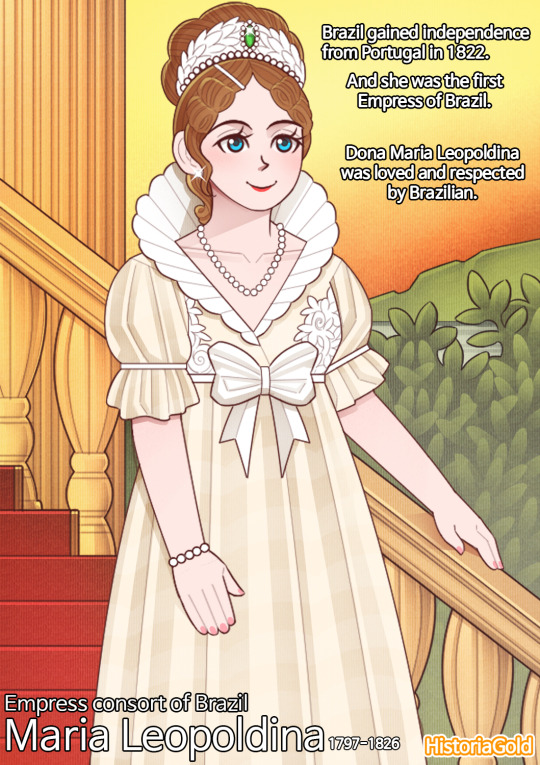
[History of Brazil] Maria Leopoldina of Austria
5 notes
·
View notes
Text
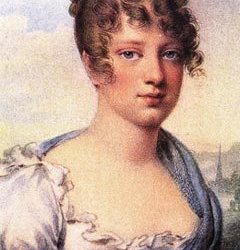

Maria Leopoldina, Empress of Brazil, reigned from 1822-1826
This Barbie made Brazil independent
Napoleon II, Duke of Reichstadt
Died young but loved in this bracket
Please go read @archduchessofnowhere's post about their relationship here. It is very sweet.
#best habsburg bracket#house of habsburg#maria leopoldina#I'm working with a grand total of three portraits for each of these two#so you're getting them on repeat
101 notes
·
View notes
Text
Round Four: Berthasaura vs Caihong
Berthasaura leopoldinae

Artwork by @i-draws-dinosaurs, written by @i-draws-dinosaurs
Name meaning: Bertha and Leopoldina’s reptile (in honour of naturalist and women’s rights activist Bertha Maria Júlia Lutz, and first Empress of Brazil and advocate for Brazilian independence Maria Leopoldina)
Time: Uncertain, likely ~121 to 75 million years ago (Aptian to Albian stages of the Early Creataceous) but may be younger
Location: Goio-Erê Formation, Brazil
Theropods are famously carnivorous dinosaurs, but many, many groups of theropods have decided “actually but what if I didn’t” and gone vegetarian, and yet it’s still wild when another one of those pops up every now and then. Even among them though, Berthasaura is special for being the only theropod that seems to have tried to just straight up turn itself into an ornithopod. The long spindly legs, the teeny little arms, and a big head with a toothless beak all come together to create an utterly bizarre little theropod that honestly nobody could have predicted.
Berthasaura is a noasaur, and those of you familiar will at this moment be saying “oh of course it’s a noasaur” because those guys were small ceratosaurs that were basically Theropod Wacky Experimental Phase 1.0. Within this group you’ve got wild sticky-outy teeth, a single weight-bearing toe on each foot in our fellow competitor Vespersaurus, and now multiple instances of beaks evolving independently. Theropods just love to evolve a beak, what can I say? Whatever the hell Berthasaura had going on, it must have been successful because as the basalmost noasaurid currently known its direct lineage has been surviving since at least the Late Jurassic!
Caihong juji
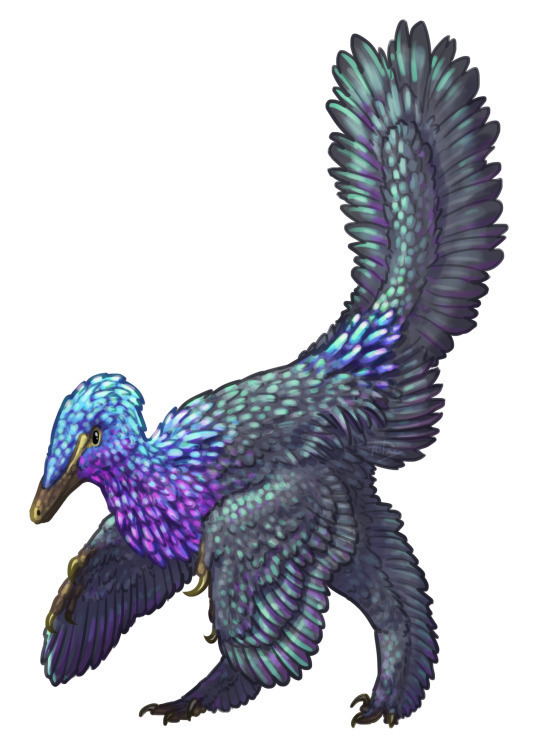
Artwork by @i-draws-dinosaurs, written by @i-draws-dinosaurs
Name meaning: Rainbow with big crest
Time: 161 million years old (Oxfordian stage of the Late Jurassic)
Location: Tiaojishan Formation, China
It’s always a special treat to hear the announcement of a dinosaur with known colours, because it gives the most direct impression of how truly stunning these animals would have been to witness in real life. And Caihong might just be the most spectacular of them all so far, described in 2018 from an immaculate full-body fossil that preserves detailed feathers! Caihong’s feathers are longer than some other floofy dinosaurs, and would have had the appearance of a luxurious mane along its neck. Not only that, the fossil preserves feather microstructures that in life would have made this dinosaur gloriously iridescent!
Now iridescent dinosaurs aren’t new, Microraptor has been decked out in fabulous starling-esque plumage for a while now, but Caihong absolutely takes it to the next level. Its whole body was covered in iridescent black, including the enormous tail, but the real star of the show are the platelet-like melanosomes found on the head, neck, and the base of the tail. Different from the usual iridescent melanosomes, the structure of these tiny organelles reflects brilliantly iridescent colours, like those on the heads of hummingbirds and particularly the bright purple feathers on the necks of the trumpeter family. Caihong would have put on an absolutely dazzling jewel-toned display in the treetops or on the forest floor of prehistoric China!
#dmm#dmm rising stars#dinosaur march madness#dinosaurs#birds#march madness#bracket#polls#palaeoblr#birblr#paleontology#round four#berthasaura#caihong
162 notes
·
View notes
Photo

Her Imperial Highness, Archduchess Paulina of Augustinia (1764-1805) (formerly Princess Paulina of Norden)
She was born in 1764 at the Schloss Bentswich to Karl Duke of Norden and his Vasian wife, Princess Helene of Vasa. Paulina was the younger fraternal twin of Princess Maria Theresa who would become the Queen Consort of Porto. Princess Paulina had an incredibly close relationship with her twin Maria Theresa and her younger sister Princess Louise. Paulina’s mother Helene enforced a strict education on her daughters which proved to be stressful for the young princess compared to her other daughters. Paulina was loved by her father, while her mother somewhat resented her for her lack of intellectual skills. Despite Paulina’s difficulties in her studies she was still able to learn five languages and studied literature. In 1780, Paulina attended the wedding ceremony of her twin sister, Princess Maria Theresa to Crown Prince Luis of Porto. With Paulina’s two older sisters marrying a King and Crown Prince, the eyes of the Norden Court turned on her. In 1781, Norden found itself at war with several Germanic states such as Bremen which was allied with many other kingdoms and principalities. Due to Norden’s poor international relations, Helena was unable to find a suitable match for her daughter. Paulina corresponded with Maria Theresa often and discussed a potential match between Crown Prince Luis’ younger brother Infante Carlos Duke of Madiera however she found him insufferable when she met him at the wedding and would not convert to Jacobanism. In 1782 tragedy struck when Maria Theresa died during childbirth. Paulina and her mother Helena rushed to Porto to be with Luis and his new son Crown Prince Carlos. Paulina and Helena stayed at the court for seven months where it was suggested that King Luis marry Paulina. Paulina grew close to the king and even considered converting to Jacobanism to be with him and raise her nephew as her own son. However, the Portian government did not approve of the match and sought to find a new alliance. Paulina and Helene returned to Norden in 1783, and her mother decided to focus on finding a match for Paulina. In 1784 with the Calais Revolution starting, Norden allied itself with Augustinia and decided to cement it with marriage. In early 1784, Paulina was married to Archduke Ferindand of Augustinia, second in line to the throne of Augustinia. They were married in a huge ceremony at the Innsbruck Cathedral with the Germanic Court in attendance. Paulina did not convert to Jacobanism and remained Peteran with special permission to marry from the Patriarch. There were two wedding ceremonies, the Jacoban one at the cathedral, and a private Peteran one in the Blue Drawing Room of the Innsbruck Palace. Paulina enjoyed a close relationship with her mother-in-law who her sister Maria Theresa was named after, Infanta Maria Theresa of Almeria. Paulina and her husband Ferdinand did not have a happy marriage at all, shortly after the birth of her first child, Archduke Francis in 1784, she discovered her husband in bed with her lady in waiting, Baroness von Nordheim. Paulina came to detest her husband and tried to avoid him at all times, however she did occasionally perform her wifely duties when she needed to. In 1785 and 1786 she would give birth to two more living children, Archduchess Maria Leopoldina and Archduke Charles. Paulina and her children resided at the Innsbruck Palace where they had a close relationship with the Germanic Empress, Maria Theresa of Almeria. Paulina’s husband Ferdinand was made Governor of Graz and relocated to the Steyr Palace in 1790. Paulina had a close relationship with her three children and was a loving mother. They were raised alongside the children of her brother-in-law Joseph I. In 1792, Paulina’s father-in-law, Ferindand VIII passed away and Joseph became the new Germanic and Augustinian Emperor. Paulina was a leading lady at the coronation celebrations held in Graz, Tyrol, and Augustinia. Paulina was delighted by the marriages of her children, Archduke Francis to Princess Henriette de Valentinois, and Archduchess Maria Leopoldina to Crown Prince Alfonso of Porto. In 1805, Paulina died from a pneumonia at the Innsbruck Palace. Her husband Ferdinand, three children, and sister-in-law Empress Maria Leonora were at her bedside at her death. Paulina, while not close with her youngest sister Viktoria, often wrote to her. Viktoria and her daughter Sophie of Rostock attended the funeral and stayed at the Augustinian Court for two months, hoping to secure a match between Archduke Charles and Sophie, but this failed.
#SophieofRostock#SOR#sims4#ts4#the sims#the sims 4#ts royals#ts4 royals#s4#the sims 4 history#historical#historical royals
70 notes
·
View notes
Text
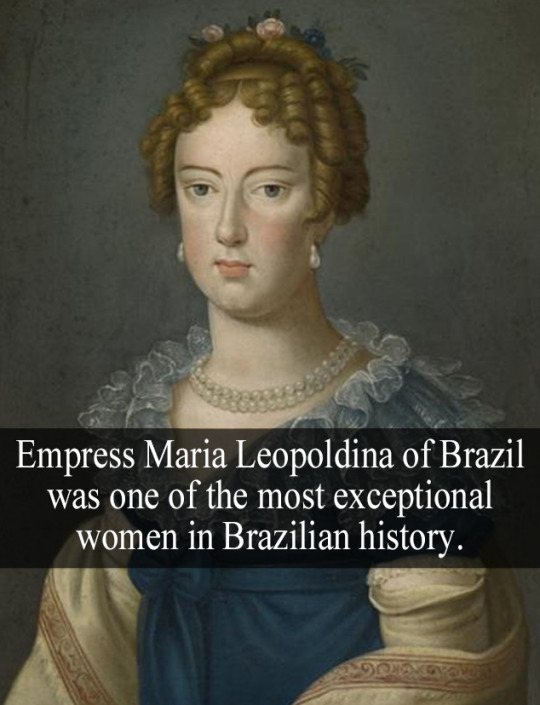
“Empress Maria Leopoldina of Brazil was one of the most exceptional women in brazilian history.” - Submitted by cenacevedo15
16 notes
·
View notes
Text
Our Contestants
1: Maria Leopoldina of Austria, First Empress of Brazil
2 Dona Maria I of Portugal
3: Dona Maria II of Portugal
4: Isabel, Princess Imperial of Brazil
5 Carlota Joaquina de Bourbon
6: João I, Duke of Bragança
7 João IV, King of Portugal
8: Afonso I, Duke of Bragança
9: Fernando I, Duke of Bragança
10: Jaime I, Duke of Bragança
11: Teodósio I, Duke of Bragança
12: Teodósio II, Duke of Bragança
13: Afonso VI of Portugal
14 Pedro II of Portugal
15: João V of Portugal
16: João VI of Portugal
17: Pedro II of Portual
18 Pedro I of Brazil/ IV of Portugal
19: Miguel I of Portugal
20: Pedro V of Portugal
21: Luís I of Portugal
22: Carlos I of Portugal
23: Manuel II of Portugal
24 Dom Pedro II of Brazil
25: Teresa Cristina, Empress of Brazil.
26: Catherine de Bragança, Queen Consort of England, Scotland, and Ireland
27: Infante Dom Manuel, Candidate for the throne of Poland
28: José I of Portugal
29: Carol II of Romania (Carlos II in Portuguese)
30: Ferdinand I of Romania
31: Infantá Antonia de Bragança, Princess Consort of Hohenzollern
32: Amélie of Leuchtenberg
33: Infanta Isabel Maria, Regent of Portugal
34: Mariana Vitória of Spain, Queen Consort of Portugal
35: Maria Francisca of Savoy (Consort to Afonso VI and Pedro II)
36: Maria Pia of Savoy (Queen-Consort to Luís I of Portugal)
6 notes
·
View notes
Text
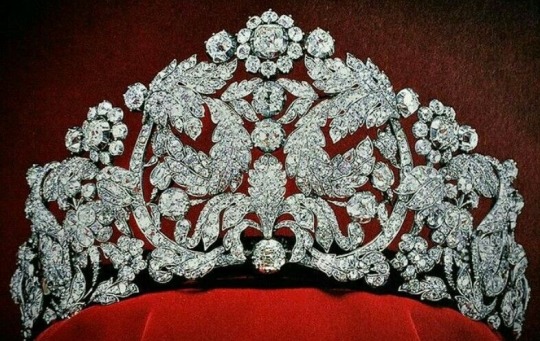
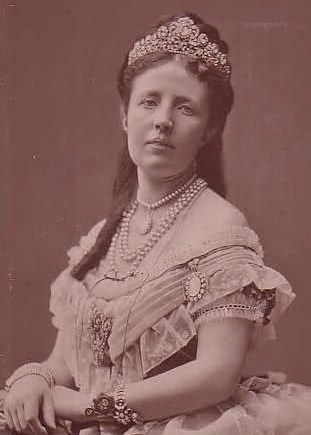
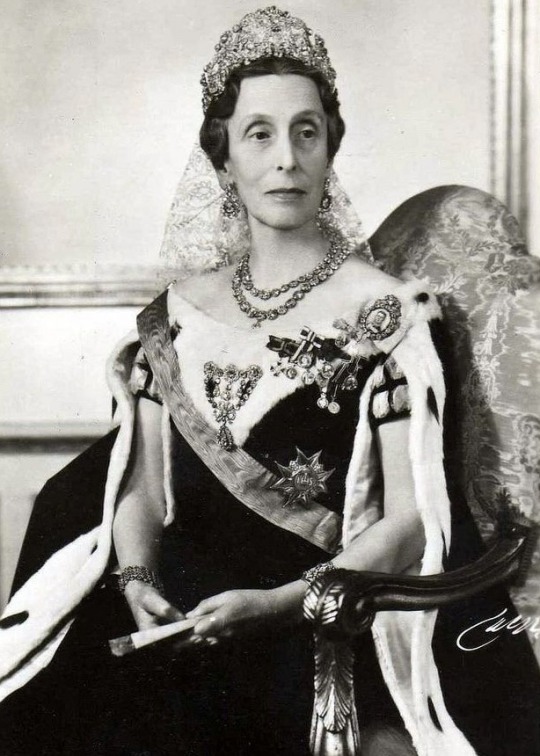


Royal Tiaras Highlights: The Braganza Tiara
The tiara was a wedding gift from Emperor Pedro I of Brazil to his second-wife, Amélie in 1829. The piece was made using diamonds initially given to Pedro’s children by Maria Leopoldina, their mother and Pedro’s first-wife. Pedro bought the diamonds from his children and used them on the tiara, which is said to weigh between 1 and 3 kg and is notoriously uncomfortable to wear. When Empress Amélie of Brazil died, she left her tiaras to her sister Queen Josephine of Sweden, and it remains in the possession of the Swedish Royal Family since.
#my absolute favorite#my precious#so so pretty#tiaras highlights#braganza tiara#swrf#swedish royal family#queen silvia#royal jewelry#royal jewels#royal tiaras
45 notes
·
View notes
Text
there is a historical parallel to queen elizabeth ii: dom pedro ii of brazil.
he died about three decades before she was even born. much like elizabeth, he was thrust into a position of power against his will - he was born to be emperor, but his father abdicated before he was even middle aged due to political pressure and pedro inherited the throne at age 4. it’s often said he could never be a child because he was sternly tutored to be emperor at a young age. ten years later, at 14, the liberal party used legislation to coup the conservative party and fully install pedro ii as emperor of brazil (”golpe da maioridade” or age of majority coup). when he became de facto emperor, however, pedro’s first move was to remove the liberals from power and place the conservatives instead. the cycling of power between parties (so that none of them ever acquired more power over the other) would become his trademark until the end of his reign.
again, much like queen elizabeth, despite hating his position and being generally unhappy because of it, he had a strong sense of duty and wanted to serve his empire. he was an educated man and strove to make brazil a center of education and technology (not that it was all roses - he crushed several revolts against the central government and did paraguay bad. very bad). we were only the second country to receive a telegraph line, during his reign. pedro ii often frequented world science fairs in europe and america. he was famous and known by other world leaders at the time - royalty, a direct descendant of the habsburgs; his mother empress maria leopoldina was a habsburg-lorraine (she died of grief when he was a kid due to an open affair her husband, the emperor, had with another woman in brazil). the royal family in brazil (ahem, unlike today) were abolitionists, and bringing abolition to brazil was what ultimately caused their downfall in 1889. it’s a fair critique that they were wrong to wait that long to hold onto power, but you can’t blame humans for protecting their own power, so for me the fact that they advocated for it and even did it in the end is enough.
(the abolition law has a pretty name though - “the golden law”. its name in portuguese is “lei áurea” after the latin name for gold, which is only vaguely similar in portuguerse, “ouro”, and most people can’t make the connection. it was signed by princess isabel as empress regent under the pretense that the emperor was travelling to europe on business. in fact, i think the royal family leveraged the situation so that the emperor could not be blamed for it, but it failed. or he didn’t have political capital to do it and used the element of surprise, idk. a house member told princess isabel moments after she signed the law: “you may have freed a race, your highness, but you condemned the crown.”)
when republican officers and soldiers couped him with the support of imperial brazil’s agrarian elite (which relied on slave labor), he did not resist. many say that he didn’t believe a woman, his daughter and direct successor, could hold the throne of brazil. in fact, pedro ii was tired, weary, sick and hopeless about the future of the country under the monarchy. he gave it up in the hopes that it would be the better path for his country. in his deathbed, his famous last words were: “may god grant me these two last wishes - peace and prosperity for brazil”.
(i had written a final paragraph making sense of my comparison between the two monarchs but it was wiped out of existence when i edited to include the video. oh well nice post regardless. but in short, i think that those who make best rulers are usually groomed for power but do not want it, which is a difficult combo to achieve)
youtube
1 note
·
View note
Photo

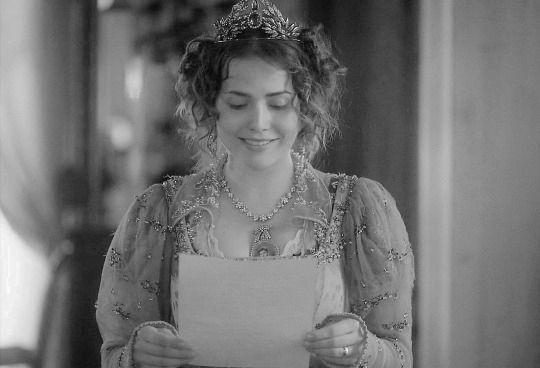



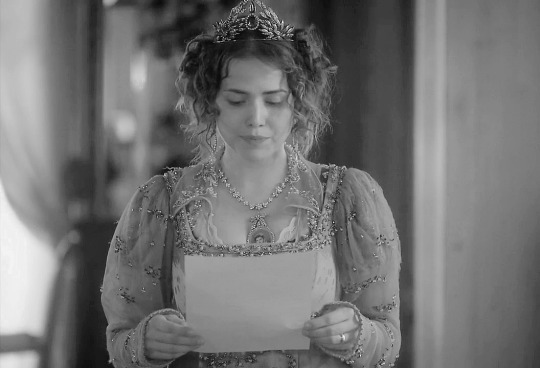

♕ 200 years since the Prince Regent Dom Pedro declared the Independence of Brazil from the United Kingdom of Portugal, Brazil and the Algarves — 7 SEPTEMBER 1822
On September 2, 1822, a new decree from Portugal arrived in Rio de Janeiro while the Prince Regent of Brazil, Dom Pedro, was in a political tour in the Province of São Paulo. The letter overturned the Brazilian government and demanded the immediate return of Pedro to Portugal. Since August 13 the Princess Maria Leopoldina of Austria was the Acting Princess Regent of the Kingdom of Brazil and head of the Council of State in the absence of her husband. Aware that Portugal intended to relegate Brazil again to the status of a simple colony rather than a kingdom united to that of Portugal and fearing a civil war the Princess acted imediately. Maria Leopoldina met in the morning of 2 September 1822 the minister José Bonifácio de Andrada e Silva and summons the Council of State. She signs on that day the Decree of Independence, declaring Brazil separate from Portugal. Leopoldina sends Pedro the news, along with letters from her and from José Bonifácio urging him to proclaim the independence of Brazil. In her letter Maria Leopoldina warns: “The pommel is ripe, pick it up already, or it will rot.”.
On September 7, 1822 at the shore of the Ipiranga River the letters reached the Prince. Dom Pedro turned to his companions and spoke: “Friends, the Portuguese Cortes want to enslave and pursue us. From today on our relations are broken. No ties can unite us anymore” and continued after he pulled out his armband that symbolized Portugal: “Armbands off, soldiers. Hail to the independence, to freedom and to the separation of Brazil from Portugal!”. He unsheathed his sword affirming that “For my blood, my honor, my God, I swear to give Brazil freedom,” and cried out: “Brazilians, from this day forward our motto will be Independence or Death!”. This event is remembered as the “Cry of Ipiranga”. The Prince and Princess then became Emperor Dom Pedro I of Brazil and Empress Consort Maria Leopoldina of Austria, inauguring the Empire of Brazil (1822-1889).
Caio Castro as Emperor Dom Pedro I of Brazil and King Dom Pedro IV of Portugal and Letícia Colin as Princess Maria Leopoldina of Austria, the Empress Consort of Brazil, Queen Consort of Portugal and Archduchess of Austria in “Novo Mundo” (2017).
#novo mundo#perioddramaedit#historyedit#weloveperioddrama#perioddramasource#onlyperioddramas#historicwomendaily#periodedits#userperioddrama#braziliansource#periodedit#women in history#period drama#brazilian history#history#brasil#brazil#maria leopoldina#maria leopoldina of austria#dom pedro i#independência do brasil#pedro i of brazil#novomundoedit#mine#mine: edit#mine: novo mundo#mine: maria leopoldina#mine: dom pedro i#mine: novela#mine: brazilian tv
90 notes
·
View notes
Note
On September the 7th, Brazil celebrated its 200th birthday. So, a bit belatedly, could you tell us something about Leopoldina of Habsburg and her role in the creation of the Empire of Brazil? Because it seems she was quite influential.
I'm gonna have to pass this one; I'm not Brazilian so I've only read about this very marginally while looking into Habsburgs in general. Leopoldina is high in my interest list however most of what I found focused on her is in Portuguese (which ok is not thaaat different to Spanish but is still a whole other language that would take me a while to translate and I already have a queue of books that I own to translate lol). I'm sure there are other people here that can answer this tho, I did saw a bunch of posts about her going around during the anniversary of Brazil's independance.
Sorry that I couldn't help!
1 note
·
View note
Text
Unpopular (?) Opinion:
Maria Leopoldine of Austria deserved A LOT more recognition. She was an amazing empress and i think most people don't even know about her :/
#maria leopoldina of austria#maria leopoldina#she was a freaking badass empress!#and her shitty husband took all the credit >:(#she also had to deal with his shit#maria leopoldine of austria
7 notes
·
View notes
Text

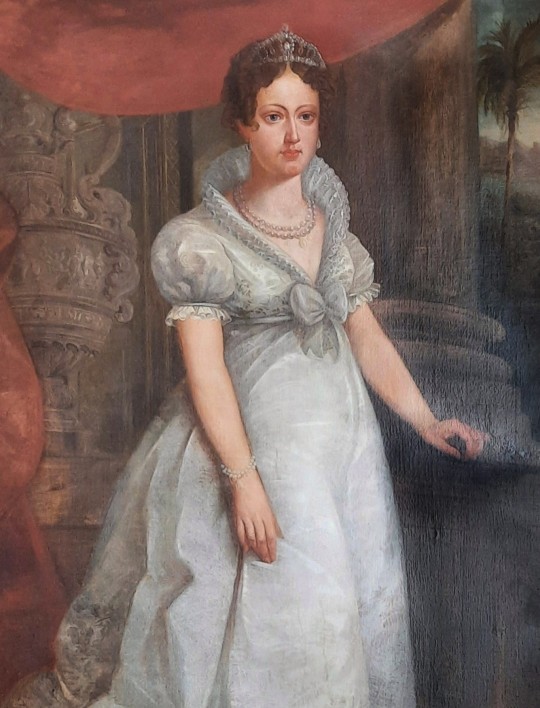
Maria Theresa, Archduchess of Austria, Queen of Hungary, Croatia and Bohemia, etc. reigned 1740-1780
This Maria reformed the empire
From anon: - chucked into ruling at age 23. while pregnant
- no prep!!!! Prussia invades Silesia!!! Ministers fucking around for their own provincial interests instead of for the Whole !!!!! and she has to somehow cope with all of this ....
- ALL WHILE being pregnant with Joseph (II) and we know that guy was just as ornery in utero as he was irl
- she's everything! He (Francis) is just ....Ken.
- YAS QUEEN rediversify that gene pool
- originally reluctant to participate in the 1st partition of poland (who wants galicia let's be real)
Maria Leopoldina, Empress of Brazil, reigned from 1822-1826
This Maria made Brazil independent
33 notes
·
View notes
Text
Round Two: Berthasaura vs Ceratosuchops
Berthasaura leopoldinae

Artwork by @i-draws-dinosaurs, written by @i-draws-dinosaurs
Name meaning: Bertha and Leopoldina’s reptile (in honour of naturalist and women’s rights activist Bertha Maria Júlia Lutz, and first Empress of Brazil and advocate for Brazilian independence Maria Leopoldina)
Time: Uncertain, likely ~121 to 75 million years ago (Aptian to Albian stages of the Early Creataceous) but may be younger
Location: Goio-Erê Formation, Brazil
Theropods are famously carnivorous dinosaurs, but many, many groups of theropods have decided “actually but what if I didn’t” and gone vegetarian, and yet it’s still wild when another one of those pops up every now and then. Even among them though, Berthasaura is special for being the only theropod that seems to have tried to just straight up turn itself into an ornithopod. The long spindly legs, the teeny little arms, and a big head with a toothless beak all come together to create an utterly bizarre little theropod that honestly nobody could have predicted.
Berthasaura is a noasaur, and those of you familiar will at this moment be saying “oh of course it’s a noasaur” because those guys were small ceratosaurs that were basically Theropod Wacky Experimental Phase 1.0. Within this group you’ve got wild sticky-outy teeth, a single weight-bearing toe on each foot in our fellow competitor Vespersaurus, and now multiple instances of beaks evolving independently. Theropods just love to evolve a beak, what can I say? Whatever the hell Berthasaura had going on, it must have been successful because as the basalmost noasaurid currently known its direct lineage has been surviving since at least the Late Jurassic!
Ceratosuchops inferodios

Artwork by @i-draws-dinosaurs, written by @zygodactylus
Name Meaning: Horned Crocodile Faced Hell Heron
Time: ~128 million years ago (Barremian stage of the Early Cretaceous)
Location: Wessex Formation, Isle of Wight, England
Say hello to the Hell Heron! Ceratosuchops is one of many new Spinosaurs described recently, showcasing the sheer diversity of this group as well as their much larger spread than previously believed. Ceratosuchops, previously thought to be just Baryonyx, is one of such new taxa that point to the entire group originating in Europe, a piece of their evolutionary puzzle not previously well known. Ceratosuchops was about 8.5 meters long, and had a long crocodile-like skull, with a horn on the top of it (hence its name). As a spinosaur, it would have probably been an aquatic stalker (you know, like a heron) - waiting near bodies of water for food, and snatching it up before it could swim away. Just, the difference between Ceratosuchops and actual herons, well, this was a big heron. It probably wouldn’t have had a sail, though it is possible it may have had a ridge like its close relative Suchomimus. It lived in a heavily river-filled environment, giving it a wide variety of locations to choose from for hunting. Besides a vast diversity of invertebrates, sharks, ray-finned fish, salamanders, lizards, turtles, many kinds of Neosuchians, Plesiosaurs, mammals, and pterosaurs, Ceratosuchops lived alongside other dinosaurs such as Hypsilophodon, Brighstoneus, Iguanodon, Mantellisaurus, Valdosaurus, Polacanthus, Eucamerotus, Oplosaurus, Ornithopsis, Aristosuchus, Calamosaurus, Calamospondylus, Eotyrannus, Neovenator, Ornithodesmus, Yaverlandia, Vectiraptor, Thecocoelurus, and even another spinosaur, Riparovenator!
#dmm#dinosaur march madness#dinosaurs#birds#dmm rising stars#dmm round two#palaeoblr#birblr#paleontology#bracket#march madness#polls#berthasaura#ceratosuchops
177 notes
·
View notes
Text
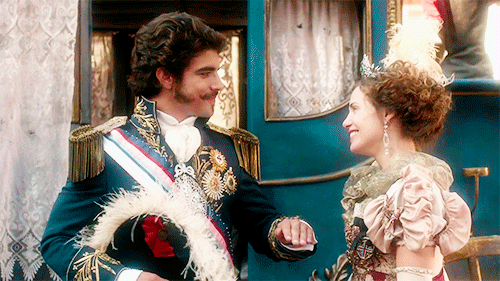
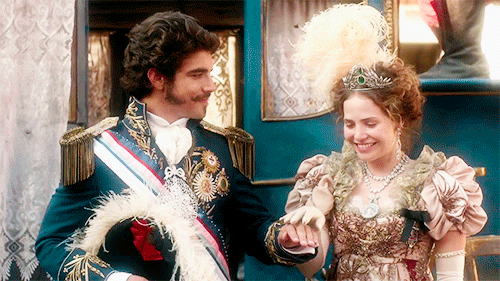
#perioddramaedit#novo mundo#novomundoedit#maria leopoldina of austria#pedro i of brazil#pedro iv of portugal#mine: perioddrama#perioddramacentral#fyperioddrama#fyeahperioddrama#mine.#rayedit.#mine: history#brazilian history#brazilian empire#empress leopoldina#leopoldina of austria
92 notes
·
View notes